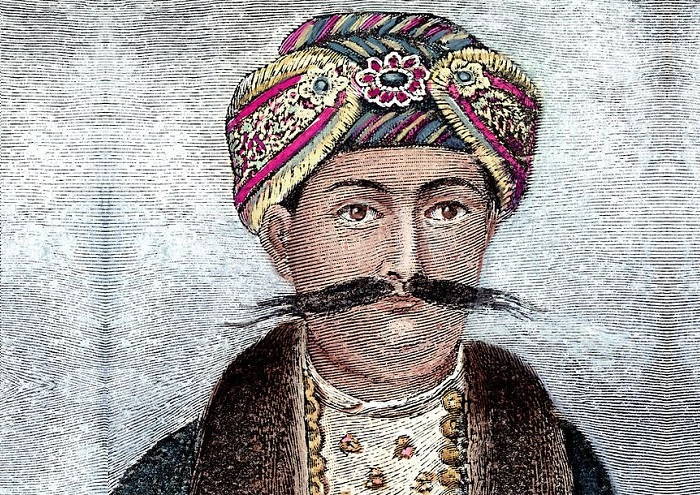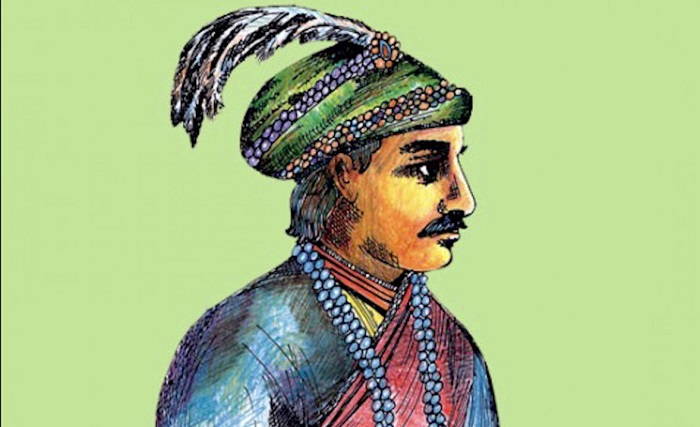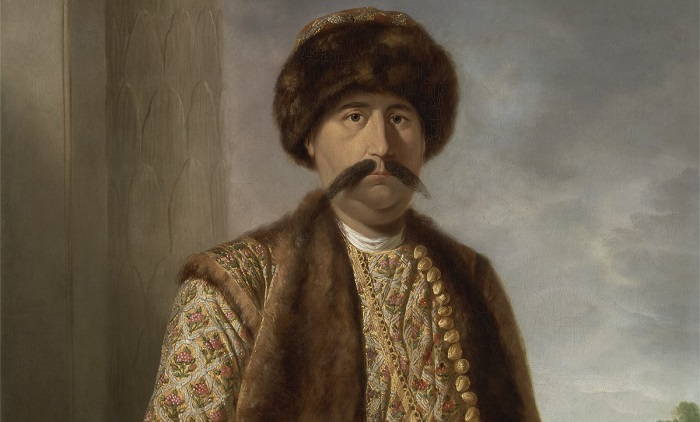Facts
Full Name: Mirza Muhammad Siraj ud-Daulah
Birth: 1733
Place of Birth: Murshidabad, Bengal Subah, Mughal Empire
Reign: 9 April 1756 – 23 June 1757
Death: 2 July 1757
Place of Death: Murshidabad, Dominion of British East India
Father: Zain ud-Din Ahmed Khan
Mother: Amina Begum
Spouse: Lutfunnisa Begum
Daughter: Qudsia Begum Sahiba
Predecessor: Ali Vardi Khan
Successor: Mir Jafar
Siraj ud-Daulah was one of the most famous and the last self-governing Nawab of Bengal. Under his reign, which lasted from April 9, 1756 to June 23, 1757, Siraj ud-Daulah stood his ground against the ‘British East India Company,’ which had begun capturing parts of Bengal. Siraj ud-Daulah was one of those few Indian rulers who knew the intention of the British right from the beginning, which prompted him to act against British colonization in Bengal. Siraj ud-Daulah’s strong resistance against the British led to the famous ‘Battle of Plassey,’ during which the Nawab of Bengal was deceived by a group of his own men, headed by Mir Jafar. Apart from costing Siraj ud-Daulah his victory against the British, Mir Jafar’s betrayal also went on to play a crucial role in history as it opened the gates for the British to conquer Bengal and later the whole of Indian subcontinent.

Image Credit : https://www.pinterest.nz/pin/460422761891120398/
Childhood & Early Life
Siraj ud-Daulah was born in Murshidabad in the year 1733. He was born into a Nawab of Bengal family to Mughal aristocrat Ahmed Khan and his wife Amina Begum, who was a Bengali aristocrat. Siraj ud-Daulah was raised at the palace of the Nawabs and was provided with required training and education needed to be qualified as a future Nawab of Bengal.
Siraj ud-Daulah was close to his maternal grandfather Alivardi Khan, who took special care of him right from his birth. He even accompanied Alivardi Khan in one of his military campaigns against the Maratha forces in 1746. In May 1752, Alivardi Khan, the then Nawab of Bengal, declared Siraj ud-Daulah as his successor. When Alivardi Khan passed away four years later on April 10, 1756, the 23-year-old Siraj ud-Daulah became the Nawab of Bengal. However, Siraj’s nomination to the Nawabship gave rise to jealousy among many, including his relatives.
As the Nawab of Bengal
The new Nawab of Bengal was welcomed by animosity and resentment, which he failed to notice at first as all the negative feelings were hidden behind the faces of his own relatives, including his aunt Ghaseti Begum and his cousin Shaukat Jung. As days passed, Siraj ud-Daulah realized that he could face a massive challenge from his aunt as she possessed serious wealth, which she was using to influence men within the court. Hence, Siraj ud-Daulah acted by seizing her wealth and placing her under confinement. This initial and crucial move by the Nawab made sure he faced no rebellion from within the court, at least during the initial phase of his administration.
Siraj ud-Daulah then went on to make certain key changes in high government positions. One of his most trusted officers Mir Madan Khan was made the new Paymaster of the forces (Bakshi) and a Hindu Kayastha named Mohanlal was elevated to the position of the Nawab’s supreme Diwan. Siraj ud-Daulah’s decision to promote a Hindu to such a high-ranked position irked the head of the armed forces, Mir Jafar, who took Mohanlal’s promotion as a personal insult, which he would never forget.

Image Credit : https://www.youtube.com/watch?v=wR3jVQieBVA
As the Nawab of Bengal, Siraj ud-Daulah took special interest in the development of the ‘East India Company’ as he was well aware of the intention of the British from the very beginning. Hence, he could not stand the sight of the British in Bengal. What increased his animosity towards the British was their decision to strengthen the fortification around Fort William without seeking the Nawab’s permission. He also condemned the British for misusing the trade privileges that were granted to them by the Mughals and for sheltering some of his estranged officers, who had committed certain fraudulent acts. While he was already mad at the British, the ‘East India Company’ started strengthening its fortification around Fort William further. When an irate Nawab asked the British to stop, they failed to pay heed to his words, earning the wrath of the Nawab of Bengal.
Siraj ud-Daulah retaliated by gathering his forces and leading an attack in the British-dominated areas of Kolkata. He managed to capture Kolkata in June 1756 and then took over the control of Fort William from the British. After taking over Fort William, Siraj ud-Daulah had the captives confined in a small prison, which came to be known as the ‘Black Hole of Calcutta.’ According to one of the prisoners named John Zephaniah Holwell, the prison in which 64 prisoners were held captive was so small that 43 out of the 64 held died of suffocation and heat exhaustion. However, the British chose to strike a peace deal with Siraj ud-Daulah, who agreed to pardon many officials belonging to the ‘British East India Company.’
British Danger & the Conspiracy Against Him
The jealousy and enmity within Siraj ud-Daulah’s court had never died down. While Mir Jafar was still angry over Mohanlal’s promotion, the traders of Bengal were not happy with the Nawab’s administration as they never felt safe about their wealth under Siraj ud-Daulah’s reign. After learning about a conspiracy at Siraj’s court, which aimed at overthrowing the Nawab, William Watts, the court representative of ‘East India Company’ informed Robert Clive about the impending conspiracy.
After getting to know that the conspirators were Mir Jafar, Yar Lutuf Khan, Rai Durlabh, Omichund, and several other officers within Siraj ud-Daulah’s army, the British chose to support the conspirators. Subsequently, Mir Jafar entered into a treaty with the British, which stated that Mir Jafar would be made the new Nawab for his support towards the British during their battle against Siraj ud-Daulah. Also, the British had agreed to pay a huge sum of money to Mir Jafar, should he succeed in helping the British dethrone the Nawab.
Robert Clive then made his move by sending his troops to launch an attack on Chandernagar. Upon learning about the attack, Siraj ud-Daulah was infuriated. However, the Nawab was also plagued by the fear of invasion by Afghans and the Marathas and hence decided to keep a part of his military force in reserve, anticipating a surprise attack from either the Afghans or Marathas. As a result, he could not send his entire army to face the British. Meanwhile, the Nawab felt like he needed to strengthen his forces and hence turned towards the French, who too were looking to oust British from the Indian subcontinent. With support from the French, Siraj ud-Daulah was now ready to put an end to the British colonization in Bengal and the ensuing circumstances led to the decisive battle, which came to be known as the ‘Battle of Plassey.’
The Battle of Plassey
The British forces of 3,000 soldiers led by Robert Clive were outnumbered by Siraj ud-Daulah’s army, which had 50,000 soldiers, 10 war elephants, and 40 cannons. However, Siraj ud-Daulah did not know about Mir Jafar’s conspiracy against him, which would later prove to be decisive in the battle. During the battle, Siraj ud-Daulah’s most trusted officer Mir Madan Khan was fatally wounded. Upon learning about Mir Madan Khan’s demise, Siraj ud-Daulah called upon Mir Jafar and Rai Durlabh to seek their advice. The Nawab was then advised to withdraw his army and return to Murshidabad. He was further told that the battle will be taken care by Mir Jafar and his men. Hence, Siraj ud-Daulah mounted a camel and started his journey towards Murshidabad, along with 2,000 horsemen. Robert Clive took advantage of the situation and attacked Siraj ud-Daulah’s retreating forces. Not anticipating such an attack, Siraj ud-Daulah’s men fled the scene. Marred by conspiracy and betrayal, Siraj ud-Daulah eventually lost the battle and was forced to escape, only to be caught later by Mir Jafar’s men.

Image Credit : https://en.wikipedia.org/wiki/Shuja-ud-Daula
Death & Legacy
Siraj ud-Daulah had managed to escape to Murshidabad, where he summoned a council of trusted men. From Murshidabad he took a boat and escaped northwards with an intention of escaping to Patna. After reaching Rajmahal, he went to a deserted garden, where he took shelter for the night. However, he was identified by one of Mir Jafar’s men, before being arrested subsequently. He was then handed over to Mir Jafar’s son Mir Meerun, who came up with his execution order in accordance with his father’s treaty with the British. On July 2, 1757, Siraj-ud-Daulah was killed by Mohammad Ali Beg and his mortal remains were buried at Khushbagh in Murshidabad.
Though Siraj-ud-Daulah is largely portrayed as a wicked man, he is revered by many for putting up a brave fight against the British forces. His loss at the ‘Battle of Plassey’ is seen widely as the beginning of British’s domination in India. Hence, Siraj-ud-Daulah’s resistance against the British forces went down in history as a prominent and dignified move by an Indian ruler. Siraj-ud-Daulah thus became known as a brave freedom fighter and is revered largely in present-day West Bengal and Bangladesh. In fact, many educational institutions in Kolkata and Bangladesh have been named after him. In 1967, a biopic titled ‘Nawab Sirajuddaula’ was released to honor his bravery.


